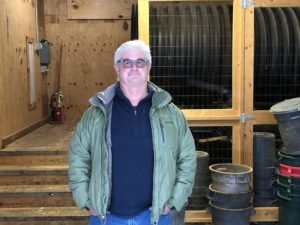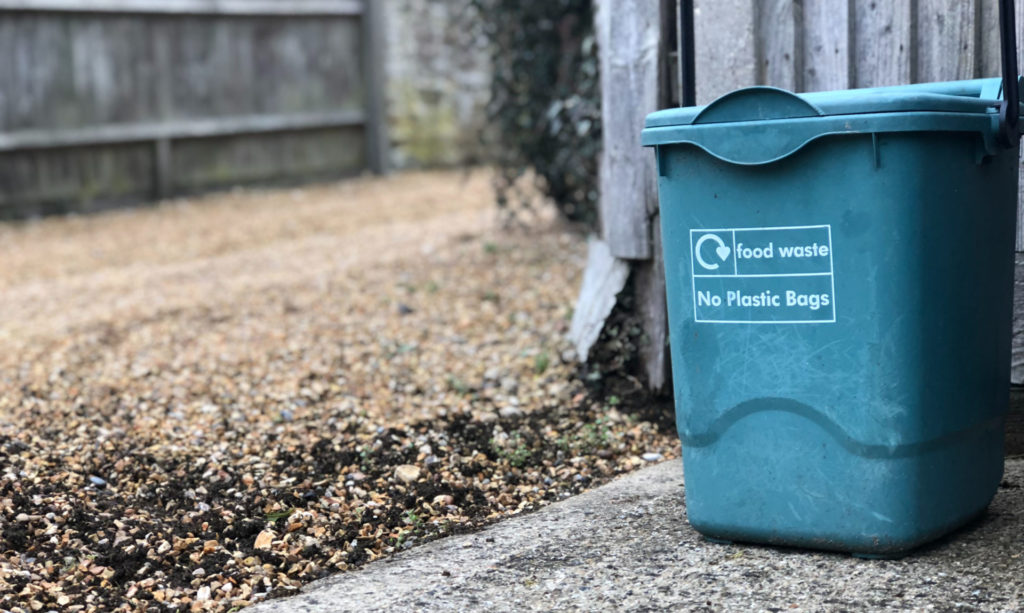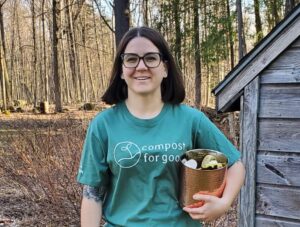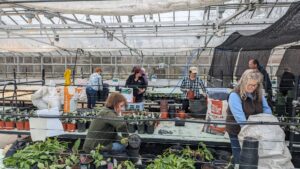Author: John Culpepper, Compost for Good
In order to reduce the potentially damaging impact of climate change, there is consensus world-wide among climate scientists that we have to remove carbon dioxide (CO2) from the atmosphere. Where there are disagreements, they tend to be on how much carbon to remove and how fast.
The atmosphere can be thought of as a “pool” of carbon. Conversely, there are two significant terrestrial “sinks” where carbon can be sequestered for a long time.
The most significant carbon sink is the world’s oceans. However, the processes whereby carbon enters the oceans, and becomes carbonate rock occur at a glacial pace. In other words, we cannot put much hope on our oceans removing atmospheric carbon fast enough. And unfortunately, a high percentage of CO2 in the atmosphere leads to ocean acidification, leading to coral reef die-off.
The second most significant carbon sink is the world’s soils. This is an emerging and fascinating story, but here are the basics:
Plants turn carbon dioxide into sugars and structural compounds. In fact, a large tree is made up almost entirely of carbon that was taken from the atmosphere. Once the plant dies then natural processes break down most of that carbon and release it back into the atmosphere. This results in short-term carbon sequestration. Does that help shift the carbon balance? Not really.
There is a far more interesting, and complex story going on just below the surface of the soil.
While plants are using photosynthesis to convert carbon dioxide into sugars and structural material for themselves, they are also making sugars and other carbon compounds, and exuding those compounds through their roots. In so doing, plants feed a world of soil life that in turn, helps the plant to take up water and nutrients. Some plants are “giving away” up to 40% of the sugars that they are producing through photosynthesis. Soil fungi are the immediate beneficiaries of these compounds, as they form symbiotic relationships with the roots of the sugar producing plants. This network of deeply intertwined relationships within the soil is vastly more complex and involved than the plant life above the soil.
According to some reports, of the carbon found in the terrestrial carbon sink, 80% is found underground. This pool of carbon is estimated to weigh over 2,500 gigatons. (One gigaton = one billion tons.) In fact, the largest living things in the world are underground in the form of vast networks of fungal mycelia.
When those fungi and the multitude of other life supported by this process die, they often form carbon-containing organic acids that don’t break down for decades. This is long-term carbon sequestration.
Back to compost.
By incorporating compost into soil or applying compost as topdressing, we create conditions that make soils more fertile thus stimulating plant growth, resulting in an increase in soil life and more carbon captured underground.
Additionally, applying compost to soil increases water retention, decreases water runoff, increases plant nutrient availability, and so much more.
It is possible, right now, to ramp up the conversion of organics into compost and significantly increase the carbon sink beneath our feet. While an increase in the use of compost could have a significant impact on agricultural and forest soils, there is also huge potential for carbon sequestration by adding compost to our lawns, gardens, and scrubby areas. When added up, aesthetic landscapes like lawns represent a gigantic opportunity for sequestering carbon.
Collectively, we can encourage our community leaders and legislators to enact laws that move us in this direction. The first such law in New York State was discussed in a previous blog and takes effect Jan 1st. It’s called the NYS Food Donation and Food Scraps Recycling Law.
Lowering the planet’s atmospheric carbon will require solutions large and small. Turning organic “waste” into compost is not only fun, resulting in a life-giving soil amendment, but compost can also play a significant role in mitigating climate change.
Learn more on the Compost for Good project page and Composting Resources page.

The author with one of Compost for Good’s Community-Scale Composters.





